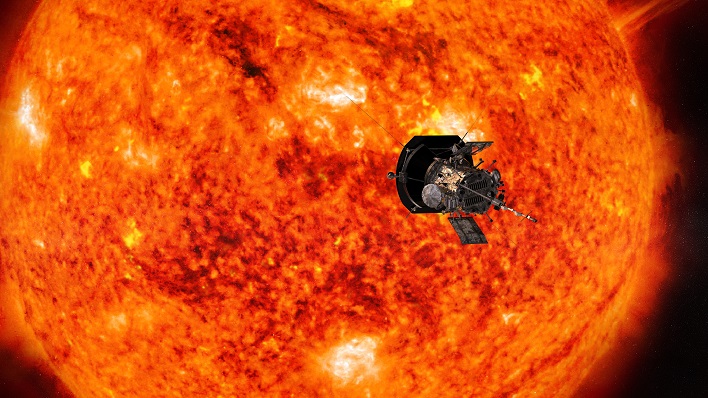NASA's Parker Probe Flies Through A Sun Explosion And Emerges With Rare Footage

NASA describes a CME as an immense eruption from the Sun's outer atmosphere, or corona, that helps drive space weather. These eruptions are known to cause damage to satellites, disrupt communications and navigation technologies, and even cause power outages on Earth. By gaining more knowledge on how these events occur, scientists are more capable of predicting how long it will take one actually to reach Earth. In 2003, a paper was published discussing a theory that CMEs may interact with interplanetary dust in orbit around the Sun and even carry that dust outward. On September 5, 2022, Parker Solar Probe was able to observe one of these events firsthand.
"These interactions between CMEs and dust were theorized two decades ago, but had not been observed until Parker Solar Probe viewed a CME act like a vacuum cleaner, clearing the dust out of its path," explained Guillermo Stenborg, an astrophysicist at John Hopkins Applied Physics Laboratory (APL) in Laurel, Maryland, and lead author on a new paper about the occurrence.
The dust in question comprises tiny particles from asteroids, comets, and planets and exists throughout the solar system, according to the space agency. On September 5 last year, a CME displaced dust out to about 6 million miles from the Sun. However, more interplanetary dust floating nearby almost immediately replaced that displaced dust.
Scientists could view the interaction between the CME and dust as the brightness decreased in the images from Parker's Wide-field Imager for Solar Probe (WISPR) camera, due to the interplanetary dust reflecting light and intensifying the brightness where the dust was present. The team was able to locate the decrease in brightness by computing the average background brightness of WISPR images across several similar objects, as well as having to pick out normal brightness variations resulting from solar streamers and other changes in the solar corona.
"Parker has orbited the Sun four times at the same distance, allowing us to compare data from one pass to the next very well," remarked Stenborg. He added that the team was able to remove brightness variations due to coronal shifts and other phenomena, and then isolate the variations caused by dust depletion.
As scientists continue to study CME events like this, they will hopefully be able to predict space weather more accurately. More studies are needed concerning CMEs to understand better how interplanetary dust affects the shape and speed of one. The study concerning the September 5th, 2022, CME event can be read in full on The Astrophysical Journal website.

